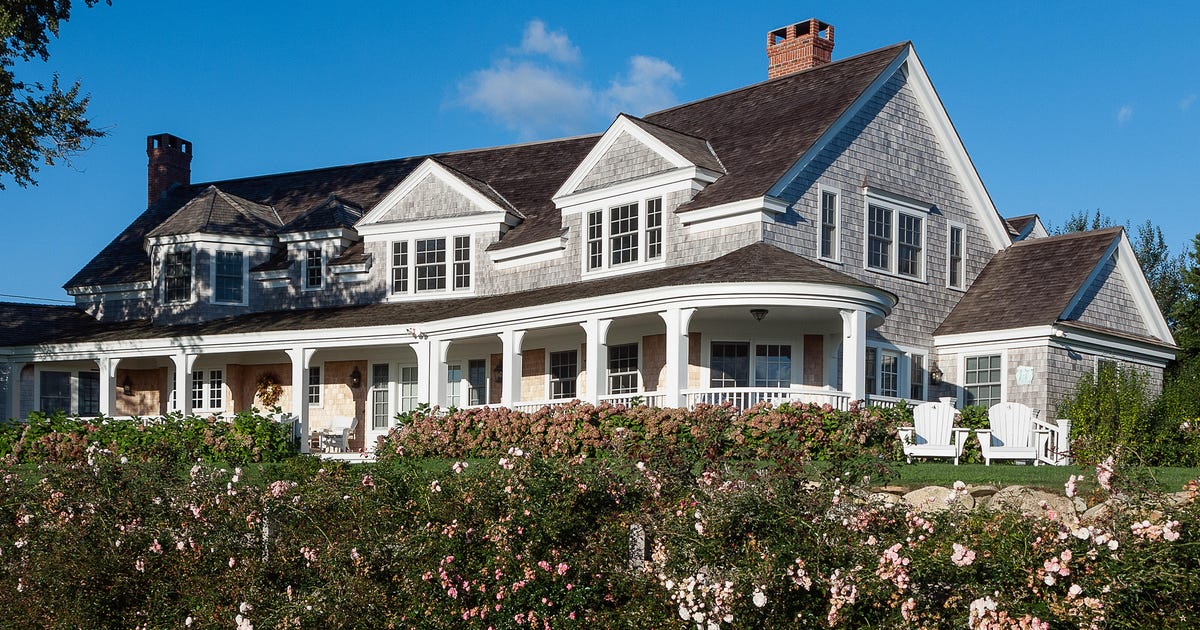[ad_1]
Some major mortgage rates trailed off significantly over the last seven days. The average interest rates for both 15-year fixed and 30-year fixed mortgages tumbled by more than a tenth of a percentage point. The average rate of the most common type of variable-rate mortgage, the 5/1 adjustable-rate mortgage, trended slightly upward, however.
The Federal Reserve announced a 25-basis point increase to its benchmark short-term interest rate on March 22. This could have an impact on mortgage rates, but it’s difficult to say just how much for a market already in flux.
“We’re in one of the most volatile markets in terms of rates since 2008,” says Jennifer Beeston, senior vice president at Guaranteed Rate, a national mortgage lender.
Mortgages hit a 20-year high in late 2022, but now the macroeconomic environment is changing again. Rates dipped significantly in January before climbing back up in February.
While rates don’t directly track changes to the federal funds rate, they do respond to inflation. Overall, inflation remains high but has been slowly but consistently falling every month since it peaked in June 2022.
After raising rates dramatically in 2022, the Fed opted for smaller, 25-basis-point rate increases in its first two meetings of 2023. The decision to hike by 0.25% on March 22 suggests that inflation is cooling and the central bank may be able to ease up — but not stop — on its rate hikes.
While mortgage rates have dipped a bit from their December 2022 peak, they still aren’t dramatically lower. Fewer buyers are willing to jump into the housing market, driving demand down and causing home prices to ease, but that’s only part of the home affordability equation.
“Even though home prices in many parts of the country have fallen since the start of the year, high rates make buying prohibitively expensive for many,” says Jacob Channel, senior economist at loan marketplace LendingTree. It’s still difficult for many buyers, particularly those looking for their first home, to afford a monthly payment.
What does this mean for homebuyers this year? Mortgage rates are likely to decrease slightly in 2023, although they’re highly unlikely to return to the rock-bottom levels of 2020 and 2021. However, rate volatility may continue for some time. “Expect mortgage rates to yo-yo up and down in the first half of the year, at least until there is a consensus about when the Fed will conclude raising interest rates,” says Greg McBride, CFA and chief financial analyst at Bankrate. (Like CNET Money, Bankrate is owned by Red Ventures.) McBride expects rates to fall more consistently as the year progresses. “Thirty-year fixed mortgage rates will end the year near 5.25%,” he predicts.
Rather than worrying about market mortgage rates, homebuyers should focus on what they can control: getting the best rate they can for their situation.
“Instead of getting into the minutiae of what the market’s doing every six seconds, buyers need to focus on what it is they’re really trying to accomplish and have a good game plan,” Beeston says.
Take steps to improve your credit score and save for a down payment to increase your odds of qualifying for the lowest rate available. Also, be sure to compare the rates and fees from multiple lenders to get the best deal. Looking at the annual percentage rate, or APR, will show you the total cost of borrowing and help you compare apples to apples.
30-year fixed-rate mortgages
The average 30-year fixed mortgage interest rate is 6.70%, which is a decrease of 18 basis points as of seven days ago. (A basis point is equivalent to 0.01%.) The most common loan term is a 30-year fixed mortgage. A 30-year fixed mortgage will often have a higher interest rate than a 15-year fixed rate mortgage — but also a lower monthly payment. Although you’ll pay more interest over time — you’re paying off your loan over a longer timeframe — if you’re looking for a lower monthly payment, a 30-year fixed mortgage may be a good option.
15-year fixed-rate mortgages
The average rate for a 15-year, fixed mortgage is 6.00%, which is a decrease of 15 basis points from the same time last week. You’ll definitely have a larger monthly payment with a 15-year fixed mortgage compared to a 30-year fixed mortgage, even if the interest rate and loan amount are the same. But a 15-year loan will usually be the better deal, as long as you can afford the monthly payments. These include usually being able to get a lower interest rate, paying off your mortgage sooner, and paying less total interest in the long run.
5/1 adjustable-rate mortgages
A 5/1 ARM has an average rate of 5.73%, an uptick of 2 basis points compared to a week ago. With an ARM mortgage, you’ll typically get a lower interest rate than a 30-year fixed mortgage for the first five years. However, you could end up paying more after that time, depending on the terms of your loan and how the rate shifts with the market rate. Because of this, an adjustable-rate mortgage might be a good option if you plan to sell or refinance your house before the rate changes. But if that’s not the case, you might be on the hook for a much higher interest rate if the market rates change.
Mortgage rate trends
Mortgage rates were historically low throughout most of 2020 and 2021 but increased steadily throughout 2022. Now, mortgage rates are roughly twice what they were a year ago, pushed up by persistently high inflation. That high inflation prompted the Fed to raise its target federal funds rate seven times in 2022. By raising rates, the Fed makes it more expensive to borrow money and more appealing to keep money in savings, suppressing demand for goods and services.
Mortgage interest rates don’t move in lockstep with the Fed’s actions in the same way that, say, rates for a home equity line of credit do. But they do respond to inflation. As a result, cooling inflation data and positive signals from the Fed will influence mortgage rate movement more than the most recent 25-basis-point rate hike.
We use rates collected by Bankrate to track changes in these daily rates. This table summarizes the average rates offered by lenders nationwide:
Average mortgage interest rates
| Product | Rate | Last week | Change |
|---|---|---|---|
| 30-year fixed | 6.70% | 6.88% | -0.18 |
| 15-year fixed | 6.00% | 6.15% | -0.15 |
| 30-year jumbo mortgage rate | 6.73% | 6.94% | -0.21 |
| 30-year mortgage refinance rate | 6.87% | 6.99% | -0.12 |
Rates as of April 5, 2023.
How to shop for the best mortgage rate
You can get a personalized mortgage rate by connecting with your local mortgage broker or using an online calculator. Make sure to think about your current financial situation and your goals when looking for a mortgage.
A range of factors — including your down payment, credit score, loan-to-value ratio and debt-to-income ratio — will all affect the interest rate on your mortgage. Having a higher credit score, a larger down payment, a low DTI, a low LTV or any combination of those factors can help you get a lower interest rate.
The interest rate isn’t the only factor that affects the cost of your home. Be sure to also consider other costs such as fees, closing costs, taxes and discount points. Make sure to shop around with multiple lenders — such as credit unions and online lenders in addition to local and national banks — in order to get a mortgage that’s the best fit for you.
What is a good loan term?
When picking a mortgage, it’s important to consider the loan term, or payment schedule. The most common loan terms are 15 years and 30 years, although 10-, 20- and 40-year mortgages also exist. Another important distinction is between fixed-rate and adjustable-rate mortgages. For fixed-rate mortgages, interest rates are stable for the life of the loan. For adjustable-rate mortgages, interest rates are set for a certain number of years (usually five, seven or 10 years), then the rate adjusts annually based on the current interest rate in the market.
When deciding between a fixed-rate and adjustable-rate mortgage, you should consider how long you plan to live in your home. Fixed-rate mortgages might be a better fit for people who plan on staying in a home for a while. Fixed-rate mortgages offer more stability over time compared to adjustable-rate mortgages, but adjustable-rate mortgages can sometimes offer lower interest rates upfront. However, you could get a better deal with an adjustable-rate mortgage if you only have plans to keep your home for a couple years. The best loan term depends on your personal situation and goals, so be sure to think about what’s important to you when choosing a mortgage.
[ad_2]


